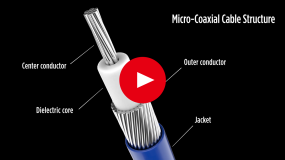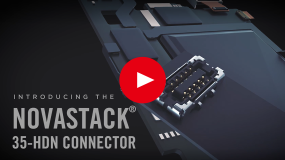How I-PEX Connectors Are Helping to Accelerate the Evolution of AR/VR/MR Devices
AR/VR/MR Market Trends
In recent years, the AR/VR/MR market has been expanding rapidly. It is expected to grow significantly in the future.
The main reasons for market growth are lower prices, smaller size and lighter weight, as well as improved pixel counts and refresh rates, which have dramatically improved the immersive experience of virtual reality.
AR/VR/MR market growth forecast
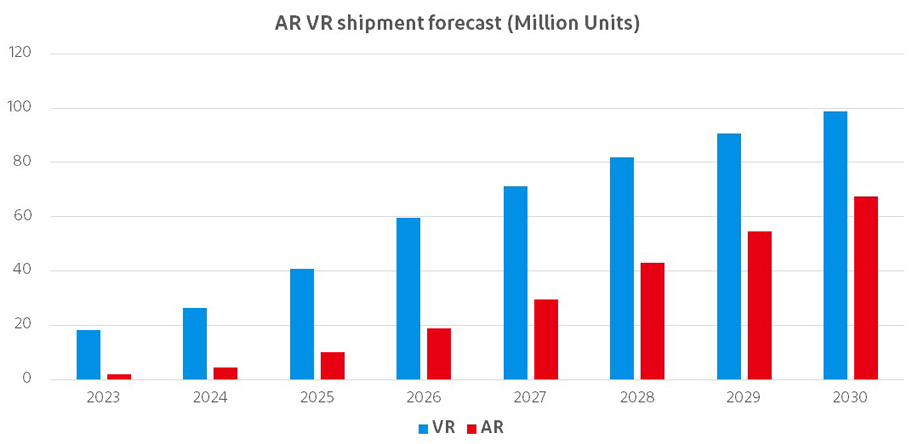
https://www.abiresearch.com/market-research/service/augmented-virtual-reality/
Contents
What is AR/VR/MR?
AR (Augmented Reality)
Augmented Reality (AR) devices use a technology that enables an augmented visual environment by adding artificial image information based on information from the real world. Since it is based on the real environment, it is generally a lightweight device eyeglass-type rather than a VR head-mounted display.

VR (Virtual Reality)
VR (Virtual Reality) is a generic term for head-mounted displays and applications that project 100% of the visual information of virtual reality (artificial images) and block 100% of the visual information of the real world. Because of its highly immersive feel and high image quality, applications include 3D games, 3D CAD, etc.

MR (Mixed Reality)
MR (Mixed Reality) devices are based on VR with AR functions. They project visual information from the real world via an external camera (camera passthrough) combined with direct confirmation of optical information with the naked eye (optical see-through).
The latest VR devices are often presented as MR devices, and future trends are attracting attention.
| AR | VR | MR | |
| Characteristic | No real world blocking + 2D Graphics |
Real world 100% blocking + 100% virtual reality |
Camera Passthrough/ Optical see-through + Partially virtual reality |
| Immersion Feeling | Low | High | High/Normal |
| Graphic | 2D only | 2D & 3D | 2D & 3D |
AR/VR/MR Trends
Challenge: Improvement to stress-free
At present, there are no products suitable for long-term use for AR/VR/MR devices. There are two main reasons for this:
Power supply limitations
Battery power capacity limitations prevent continuous use for extended periods of time.
Physical strain
For VR/MR devices, improvements in image quality, weight reduction and size reduction are needed. And, issues related to movement restrictions need to be resolved.
Improved Image Quality
The most important technology to enhance immersion is display technology. In particular, the refresh rate and number of pixels of the displays in the latest VR devices are increasing rapidly, which increases the amount of information that can be transmitted within a unit time, requiring a high-speed transmit solution.
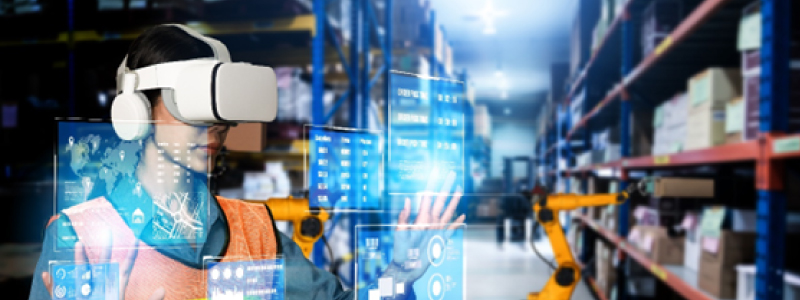
Display technology specification roadmap
A. Increased number of pixels
B. Faster refresh rate
C. Faster response speed

Weight and Size Reduction
Both AR and VR are devices that are worn on the head put a strain on users when worn for long periods of time. In order to reduce this burden, it is important to reduce the weight of devices. I-PEX contributes to the lightweight design of devices by designing products that are both compact, lightweight design, while still offering high-speed transmission.
Movement Restriction Elimination
Conventional VR HMDs (head mounted displays) require several cables to be connected between the HMD and the main unit for the purpose of stable signal reception and power supply, which makes it extremely difficult for game players. The latest HMDs are mainly stand-alone models with built-in batteries. They operate using a wireless technology for high-speed signals and are generally cableless, dramatically reducing operational limitations of players.
I-PEX's MHF® (micro RF coaxial ) connectors and NOVASTACK® (board-to-board/FPC) connectors contribute to stable reception of internal connection signals such as Wi-Fi and 5G, which are typical wireless communications standards.

I-PEX Products for AR/VR/MR Devices
I-PEX connectors contribute to both device miniaturization and high-speed transmission within AR/VR/MR devices. For more information about our products, please click on the links below.
Example of appropriate connector products for an AR device
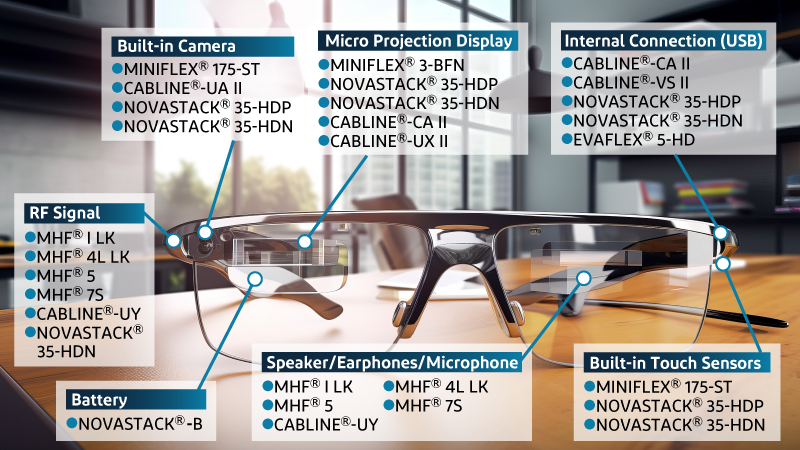
| Built-in Camera | Micro Projection Display |
Internal Connection(USB) |
RF Signal | Battery | Speaker/ Earphones/ Microphone |
Built-in TouchSensors |
| MINIFLEX® 175-ST CABLINE®-UA II NOVASTACK® 35-HDP NOVASTACK® 35-HDN |
MINIFLEX® 3-BFN NOVASTACK® 35-HDP NOVASTACK® 35-HDN CABLINE®-CA II CABLINE®-UX II |
CABLINE®-CA II CABLINE®-VS II NOVASTACK® 35-HDP NOVASTACK® 35-HDN EVAFLEX® 5-HD |
MHF® I LK MHF® 4L LK MHF® 5 MHF® 7S CABLINE®-UY NOVASTACK® 35-HDN |
NOVASTACK®-B | MHF® I LK MHF® 4L LK MHF® 5 MHF® 7S CABLINE®-UY |
MINIFLEX® 175-ST NOVASTACK® 35-HDP NOVASTACK® 35-HDN |
Example of appropriate connector products for an VR device
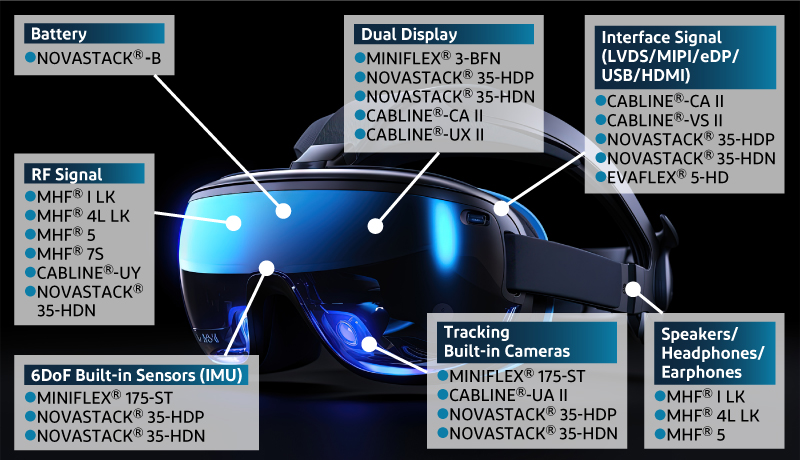
| RF Signal | Tracking Built-in Cameras |
Dual Display | 6DoF Built-in Sensors (IMU) |
Battery | Speakers/ Headphones/ Earphones |
Interface Signal (LVDS/MIPI/eDP/ USB/HDMI) |
| MHF® I LK MHF® 4L LK MHF® 5 MHF® 7S CABLINE®-UY NOVASTACK® 35-HDN |
MINIFLEX® 175-ST CABLINE®-UA II NOVASTACK® 35-HDP NOVASTACK® 35-HDN |
MINIFLEX® 3-BFN NOVASTACK® 35-HDP NOVASTACK® 35-HDN CABLINE®-CA II CABLINE®-UX II |
MINIFLEX® 175-ST NOVASTACK® 35-HDP NOVASTACK® 35-HDN |
NOVASTACK®-B | MHF® I LK MHF® 4L LK MHF® 5 |
CABLINE®-CA II CABLINE®-VS II NOVASTACK® 35-HDP NOVASTACK® 35-HDN EVAFLEX® 5-HD |

